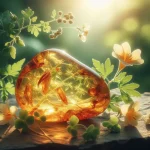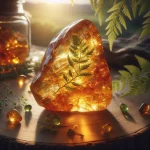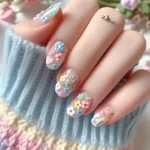- Top 10 Celsius Drink: The Ultimate 2025 Guide - 08/07/2025
- Prime Drink Comprehensive Deep Dive 2025 (10K+ word) - 08/05/2025
- Top Alani Energy Drink: 2025 Deep Dive(10K+ word) - 08/04/2025

Table of Contents
Why Are Cats So Cute?
Cats have been our companions for thousands of years, enchanting us with their unique mix of elegance, playfulness, and affection. But why exactly are cats so universally adored and often described as “cute”? This article explores the science, psychology, and cultural significance behind their appeal, supported by data, studies, and historical context.
1. The Science of Cuteness
Cuteness, scientifically known as baby schema (Kindchenschema), is a set of physical traits that elicit caregiving behaviors in humans. These traits include large eyes, round faces, and small noses—features that cats exhibit prominently.
Key Traits of Baby Schema in Cats
| Feature | Description | Emotional Impact on Humans |
|---|---|---|
| Large Eyes | Cats’ proportionally large eyes mimic infant traits. | Triggers nurturing instincts |
| Round Face | Rounded head structure enhances “youthful” appearance. | Evokes protective feelings |
| Small Nose | A small, unobtrusive nose keeps focus on the eyes and mouth. | Enhances perceived cuteness |
Research Evidence
A 2009 study published in PLoS ONE found that humans are evolutionarily predisposed to respond to baby-like features. These traits activate brain regions associated with reward and caregiving, explaining our fascination with cats’ faces.
2. Behavioral Charms
Beyond their physical appearance, cats’ behaviors contribute significantly to their cuteness.
a. Playful Antics
Cats’ hunting instincts translate into playful behaviors, such as chasing laser pointers, pouncing on toys, or even batting at random objects. This playfulness showcases their agility, intelligence, and quirky personalities.
b. Affectionate Gestures
Cats express affection in subtle but heartwarming ways, such as purring, head-butting, or kneading. These behaviors create a strong emotional bond between cats and their owners.
| Behavior | Meaning | Emotional Impact on Humans |
|---|---|---|
| Purring | Indicates contentment or comfort | Soothes and reduces stress |
| Head-Butting | Marking territory with scent | Signals trust and affection |
| Slow Blinking | A non-verbal sign of trust | Strengthens emotional connection |
c. Independence and Mystery
Cats’ self-sufficient nature contrasts with their moments of vulnerability, creating an appealing balance of independence and affection.
3. Evolutionary and Genetic Factors
Domestic cats (Felis catus) have undergone significant evolutionary changes to adapt to life with humans.
Evolutionary Timeline
| Time Period | Key Development | Impact on Cuteness |
|---|---|---|
| ~10,000 years ago | Cats began associating with humans | Traits like calmness became advantageous |
| Ancient Egypt | Cats revered as sacred animals | Symmetry and elegance emphasized |
| Modern Era | Selective breeding for appearance | Development of distinct, “cute” breeds |
Cats’ domestication has emphasized traits like soft fur, rounded features, and mild temperaments, making them more endearing to humans.
4. Psychological Effects of Cats
Cats not only look and act cute but also have a profound psychological impact on humans.
a. Stress Reduction
Research shows that spending time with cats reduces cortisol (stress hormone) levels and increases serotonin and dopamine levels, which are associated with happiness and well-being.
b. Oxytocin Release
Interacting with cats triggers the release of oxytocin, often called the “love hormone.” This chemical fosters bonding and feelings of affection.
c. Therapeutic Benefits
The vibrations of a cat’s purr, typically ranging from 25 to 150 Hz, are believed to promote healing and reduce anxiety.
Table: Psychological and Health Benefits of Cats
| Benefit | Supporting Evidence | Source |
|---|---|---|
| Reduced Stress | Lower cortisol levels observed in cat owners | Journal of Stress Research |
| Improved Mood | Increased serotonin and dopamine levels | Behavioral Neuroscience Studies |
| Enhanced Longevity | Cat ownership linked to reduced heart attacks | American Heart Association |
5. Cultural Significance of Cats
Cats have played a prominent role in human culture for centuries, enhancing their appeal.
a. Historical Reverence
- Ancient Egypt: Cats were sacred, often depicted in art and associated with the goddess Bastet.
- Asia: In Japan, the maneki-neko (beckoning cat) is a symbol of good luck.
b. Cats in Media and the Internet Age
Cats have become modern-day icons, thanks to social media and viral videos. Figures like Grumpy Cat, Lil Bub, and Maru have amassed millions of fans globally.
| Famous Cats | Platform or Medium | Significance |
|---|---|---|
| Grumpy Cat | Social Media, Memes | Icon of internet humor |
| Maru | YouTube | Known for playful antics |
| Nyan Cat | Viral Animation | Symbol of internet culture |
6. The Unique Bond Between Cats and Humans
Unlike dogs, which openly seek attention, cats’ subtle affection feels special and earned. This dynamic creates a deeper emotional connection for many owners.
Table: Comparison of Cat and Dog Affection
| Trait | Cats | Dogs |
|---|---|---|
| Expression of Love | Subtle (purring, slow blinks) | Overt (tail wagging, licking) |
| Independence | Highly independent | Reliant on human attention |
| Emotional Reward | Feels “earned” | Consistent and predictable |
7. The Future of Cats’ Popularity
With their adaptability and enduring appeal, cats are likely to remain beloved companions for generations. Their cuteness is not only a product of their physical and behavioral traits but also their ability to adapt to human lifestyles and provide emotional comfort.


Conclusion
Cats are undeniably cute due to their physical traits, playful behaviors, and the emotional bonds they foster with humans. Their presence in our lives is more than just aesthetic; it’s therapeutic, cultural, and deeply rewarding.
For further reading:
- National Geographic: The Science of Cuteness
- Scientific American: Why Cats Are So Popular
- BBC History of Cats
Whether you’re mesmerized by a kitten’s playful pounce or comforted by the gentle purr of an older cat, one thing is certain: cats have mastered the art of capturing our hearts.
Recommended Articles:
What Can I Feed a Stray Cat: 2025 Comprehensive Guide – love a happy home
What to Do if You Find a Stray Dog 2025 – love a happy home
- Best Perfume for Women Top Picks for Every Style 2025
- Amazon Best Sellers in Skin Care Products Top 10 2025
- Perfume: Everything You Need to Know 2025
- Burberry Her Perfume: A Deep Dive 2025
- Ariana Grande Perfume: A Complete Guide 2025
- YSL Perfume: A Legacy of Luxury and Elegance 2025
- Sol de Janeiro Perfume: A Luxurious Fragrance 2025
- Billie Eilish Perfume 2025 In-Depth Guide
- Delina Perfume: A Comprehensive Guide 2025
- Kayali Perfume 2025 In-Depth Guide
- Miss Dior Perfume 2025 In-Depth Guide
- Valentino Perfume 2025 In-Depth Guide
- How to Increase Charisma: Women’s Edition 2025
- Amber: That Captivates the World 2025
- What Color Is Amber 2025?
- Makeup Looks: 2025 Finding Your Unique Style
- Polygel Nails: 2025 Nail Revolution
- Mouse Pretty Makeup 2025 In-Depth Guide
- Builder Gel Nails: 2025 Perfect, Long-Lasting Nails
- Trendy Short Gel Nails: 2025 Style Meets Practicality
- Makeup Bag: 2025 Your Beauty Companion
- Wedding Makeup Looks 2025 In-Depth Guide
- Christmas Makeup Looks: 2024 Glamorous Ideas
- 80s Makeup Looks 2025 In-Depth Guide
- 100 Cute Makeup Looks 2025 In-Depth Guide
- Natural Makeup Looks: 2025 Enhance Your Natural Beauty
- How to Remove Gel Nails Safely at Home
- Ombre Nails: 2024 Gorgeous Manicure Trend
- Autumn Nails Trends: Best Fall Nails
- Cute Fall Nails: Trendy Nail Ideas
- Fall Nails 2024: Trendy Colors, Designs, and Styles
- Summer Nails 2024: Top Trends
- 10 Cute Acrylic Nails Ideas to Elevate Your Look
- Beauty of Square Short Acrylic Nails: A Practical Guide
- Square Short Acrylic Nails: Stylish and Practical
- Cute Short Acrylic Nails Ideas: Trendy Look
- Cute Short Acrylic Nails: Perfect Look
- Best Short Acrylic Nails Ideas(15 Types)
- Trendy Short Acrylic Nails Ideas(13 Types)
- Short Acrylic Nails: Perfect Style with Practicality
- Short Acrylic Nails: Stylish, Durable, and Practical
- Acrylic Nails Ideas: 10 Trendy Designs
- How to Remove Acrylic Nails(1 In-Depth Guide)
- French Tip Nails 2025 In-Depth Guide
- French Tip Nails: A Timeless Style with a Modern Twist
- How to Achieve the Perfect Glazed Donut Nails
Amazon Best Sellers in Clothing & Shoes – Top 10 Must-Have Picks 2025
Let's be real - when you need stylish, comfy clothes without breaking the bank, Amazon's got your back. They're killing it with everything from chill weekend looks to sharp office outfits, all at prices that actually make sense.
We've dug through the bestsellers to bring you:
🔥 The top 10 clothing & shoe picks flying off the virtual shelves
👍 Real customer takeaways (the good, the bad, the "OMG must-have")
💡 How to style each piece for maximum impact
✨ Why these particular items are crushing it in reviews
Whether you're doing a full closet refresh or just need some solid basics, these crowd-pleasers deliver on quality, comfort, and that "I actually want to wear this" factor.
1. Carhartt Men's Loose Fit Heavyweight Short-Sleeve Pocket T-Shirt
Product Overview
Carhartt is known for its durable workwear, and their Men's Loose Fit Heavyweight Short-Sleeve Pocket T-Shirt is no exception. This shirt is designed with 100% cotton to provide a comfortable, breathable, and long-lasting wear. The loose fit adds flexibility for movement, making it a great choice for work or leisure.
Key Features:
- 100% cotton material ensures breathability and comfort
- Loose fit design allows for maximum mobility
- Chest pocket for added utility
- Available in a variety of colors
- Machine washable, making maintenance easy
User Reviews
Customers rave about the sturdy material and the long-lasting durability of this shirt. Many note that it is perfect for daily wear, even in physically demanding jobs. While some buyers found it a bit roomy for a more tailored fit, others appreciate the comfortable and relaxed style.
Style Tips & Outfit Suggestions
This Carhartt t-shirt is perfect for layering under a jacket or hoodie for a casual look. Pair it with jeans, cargo pants, or shorts for an easygoing weekend outfit. It’s ideal for anyone who needs durable, comfortable clothing that withstands tough conditions.
2. Gildan Men's Crew T-Shirts, Multipack, Style G1100
Product Overview
Gildan's Crew T-Shirts Multipack is a cost-effective solution for those in need of basic t-shirts. Known for their comfort and affordability, these t-shirts are made from a cotton blend, ensuring softness and breathability. The moisture-wicking technology keeps you dry, making it suitable for both active and everyday wear.
Key Features:
- Breathable cotton blend fabric for everyday comfort
- Moisture-wicking technology ensures a dry feel throughout the day
- Available in multipacks for added value
- Tag-free design for maximum comfort
- Available in various colors and sizes
User Reviews
Amazon reviewers love the value-for-money aspect of the multipack. Many customers highlight how well these shirts fit and how they can be worn for workouts or as casual tees. A few users mentioned that the shirts might shrink slightly after washing, so opting for a size up could be a good idea.
Style Tips & Outfit Suggestions
These shirts are versatile and can be worn under jackets, sweaters, or button-down shirts for layering. They're perfect for exercise routines, casual outings, or even sleepwear. If you need plain tees for everyday use, Gildan's pack is a reliable choice.
3. Crocs Unisex Adult Classic Clog
Product Overview
Crocs are synonymous with comfort, and their Classic Clog remains one of Amazon's top-selling footwear items. Made with Croslite foam, these clogs are incredibly lightweight, water-resistant, and easy to clean. Ideal for both indoor and outdoor wear, they offer all-day comfort with a stylish design.
Key Features:
- Made from Croslite foam for a cushioned, comfortable feel
- Slip-on style for convenience and quick wear
- Ventilation holes allow breathability
- Water-friendly and easy to clean
- Available in a wide range of colors
User Reviews
Customers love the versatility and comfort of these clogs. Many buyers appreciate how easy they are to slip on and off, making them perfect for beach days, gardening, or even work environments. However, some users find them too wide for narrow feet.
Style Tips & Outfit Suggestions
Pair Crocs with shorts or casual summer outfits for a laid-back style. They're also a great option for poolside or spa visits. Whether you're running errands or relaxing at home, these clogs add a practical and stylish touch to any outfit.
4. Hanes Men's EcoSmart Fleece Hoodie Sweatshirt
Product Overview
Hanes' EcoSmart Fleece Hoodie combines warmth with sustainability. Made with up to 5% recycled polyester, it offers eco-friendly fashion without sacrificing comfort. The fleece lining provides coziness during colder days, while the adjustable drawstring hood adds extra warmth.
Key Features:
- Made with 5% recycled polyester for a sustainable option
- Soft and cozy fleece lining for warmth
- Adjustable drawstring hood for personalized fit
- Ribbed cuffs and hem to lock in warmth
- Machine washable and durable
User Reviews
Reviewers love this hoodie for its eco-conscious materials and affordable price. Many highlight its soft feel and great warmth for colder months. A few customers noted that the sizing might run a little larger, so it’s best to check the size guide before purchasing.
Style Tips & Outfit Suggestions
This hoodie is perfect for layering over a t-shirt or tank top for an athleisure look. Pair it with jeans or sweatpants for a comfortable and stylish outfit. Whether you're heading to the gym or lounging at home, this hoodie is a great addition to your wardrobe.
5. Crocs Kids' Classic Clog
Product Overview
Crocs’ Kids’ Classic Clog is designed to provide the same comfort and durability as the adult version but with a child-friendly fit. The Croslite foam offers lightweight cushioning, while the secure back strap ensures a snug fit.
Key Features:
- Croslite foam for soft, cushioned comfort
- Ventilation holes for breathability
- Adjustable back strap to keep shoes in place
- Easy to clean and maintain
- Available in fun, bright colors for kids
User Reviews
Parents love these clogs for their easy-to-clean nature and comfort. They’re perfect for kids who need to run around but still want to stay comfortable. Many parents report that the back strap ensures a secure fit, preventing the clogs from slipping off during play.
Style Tips & Outfit Suggestions
These clogs are perfect for summer outfits, beach trips, or even casual school days. Pair them with t-shirts, shorts, or dresses for a simple and comfortable look. They're easy to slip on for kids who are always on the go.
6. Nippies Nipple Covers for Women
Product Overview
For women looking for discreet, seamless coverage, the Nippies Nipple Covers are the perfect solution. Made from silicone and featuring medical-grade adhesive, these covers stay in place while remaining invisible under clothing.
Key Features:
- Invisible under clothing—perfect for thin or sheer fabrics
- Reusable up to 25+ times
- Waterproof and sweat-proof for lasting use
- Hypoallergenic adhesive for sensitive skin
- Comes with a travel box for easy storage
User Reviews
Women love the comfort and invisibility these nipple covers offer. Many report that they stay in place well, even during active movements like dancing or exercise. Some users mentioned that they peel off more easily if worn for extended periods, so reapplication may be needed after a long day.
Style Tips & Outfit Suggestions
These nipple covers are ideal for wearing under strapless tops, low-cut dresses, or tight-fitting clothing. They provide the coverage needed without the lines or discomfort of traditional bras.
7. Hanes Men's Cotton Crew Tee Undershirts, Multi-Pack
Product Overview
Hanes' Men's Cotton Crew Tee Undershirts are a wardrobe staple for any man. Made from soft, breathable cotton, these shirts offer all-day comfort. They are designed with moisture-wicking properties, making them perfect for layering or wearing solo.
Key Features:
- Soft and breathable cotton fabric
- Moisture-wicking technology keeps you cool
- Tag-free design for extra comfort
- Available in a multipack for added value
User Reviews
These undershirts are highly rated for their softness and comfort. Many buyers also highlight how great they are for layering or workwear. A few customers reported that the shirts run a bit larger than expected, so be mindful when selecting your size.
Style Tips & Outfit Suggestions
Perfect for layering under dress shirts or sweaters, these undershirts provide extra comfort. They are also great for wearing as casual tees in hot weather or as loungewear around the house.
8. J.VER Men's Dress Shirts
Product Overview
The J.VER Men's Dress Shirt combines comfort and style, offering a stretchy, wrinkle-free option that’s ideal for business casual and formal occasions. Made from a stretch fabric, it moves with you while maintaining a crisp look.
Key Features:
- Wrinkle-free fabric for easy maintenance
- Stretchy material for extra comfort and flexibility
- Classic button-down design for a formal appearance
- Available in a range of colors and patterns
User Reviews
Customers love the comfort and stretch of this shirt, especially for long hours of wear. The wrinkle-free nature is a standout feature, making it a great option for travelers and those who need low-maintenance attire.
Style Tips & Outfit Suggestions
Pair this shirt with dress pants or ** chinos** for a polished work look. You can also layer it under a blazer for formal events. The stretchy material makes it a great choice for those who value comfort without sacrificing style.
9. CRZ YOGA Butterluxe High Waisted Lounge Legging
Product Overview
CRZ YOGA’s Butterluxe High Waisted Leggings are perfect for anyone who enjoys soft, stretchy activewear. Whether you're heading to the gym, doing yoga, or simply lounging at home, these leggings offer the ultimate in comfort and performance.
Key Features:
- Buttery soft fabric that feels amazing on your skin
- High-waisted design for extra tummy control
- Squat-proof for active movements
- Moisture-wicking properties keep you cool during workouts
User Reviews
Reviews highlight the **luxurious feel
** and high waist of these leggings, which provide excellent support and comfort. Many note that the buttery-soft fabric makes them incredibly comfortable to wear all day long.
Style Tips & Outfit Suggestions
These leggings are perfect for workouts, yoga, or loungewear. Pair them with a sports bra, tank top, or oversized t-shirt for a casual yet stylish outfit.
10. Fruit of the Loom Men's Undershirts, Moisture Wicking & Tag-Free
Product Overview
Fruit of the Loom’s Men's Moisture-Wicking Crew Undershirts are ideal for everyday wear or as work undershirts. Made from soft cotton with moisture-wicking technology, these shirts ensure comfort all day long.
Key Features:
- Moisture-wicking technology keeps you dry
- Soft cotton material for ultimate comfort
- Tag-free design for irritation-free wear
- Available in multipacks for added value
User Reviews
Customers consistently praise these shirts for their comfort and affordable pricing. Many note that the shirts stay fresh even after long days, thanks to the moisture-wicking properties.
Style Tips & Outfit Suggestions
Wear these undershirts as a base layer or stand-alone tees on warmer days. They pair perfectly with shorts, jeans, or sweatpants for an effortless look.
🎯 Don’t Miss Out — These Are Reader-Favorite Bestsellers You’ll Love Too 👇
| # | 🎁 Product | 💬 Why It Converts | 🔗 Quick Action |
|---|---|---|---|
| ✅ 1 | Exploding KittensThe Wildly Popular Card Game | 🔥 100,000+ rave reviews🤣 Fun for all ages🎉 #1 party game choice | 👉 Click to Check Price |
| 😂 2 | Funny Dad T-Shirt“You Can’t Scare Me, I Have Kids” | 👕 Viral dad gift🎂 Perfect for birthdays & Father’s Day💬 Gets people laughing instantly | 👉 See It in Action |
| 🕯️ 3 | Luxury Candle Gift SetElegant 1-Wick, Spa Fragrance | 🧘♀️ Instant relaxation🎁 Beautifully boxed for gifting💡 Affordable luxury | 👉 Treat Yourself or Gift Now |
| 🔍 4 | Tile Bluetooth TrackerFind Anything in Seconds | 🛠️ Life-saving tech🧓 Great for parents, teens, travelers📱 Works with your phone | 👉 Never Lose Anything Again |
| 📘 5 | Atomic Habits by James ClearTransform Your Daily Life | 📖 20M+ readers worldwide🔑 Simple steps, big results🎓 Top self-growth book | 👉 Read What Everyone’s Talking About |
✅ Why These Items Sell:
| 💡 Trigger | Example in Table | How It Helps Conversion |
|---|---|---|
| ✅ Social Proof | “100,000+ rave reviews” | Builds trust instantly |
| 🎯 Use Case Clarity | “Great for family game night” | Reduces decision friction |
| 🚀 Action Verbs | “Click to check price” | Encourages immediate action |
| 🔥 Urgency & Emotion | “Don’t miss out” / “Treat yourself” | Triggers impulse buying |
| 🎁 Gifting Potential | “Perfect for birthdays & holidays” | Taps into universal purchase intent |
❤️ Your Click Makes a Difference
Every purchase made through these links helps support this site and keeps great content coming — Thanks!
💬 Why Tip? It’s Not Just Money — It’s Motivation ❤️
| 😊 What You Got | 🎁 What I Get | 🔗 What You Can Do |
|---|---|---|
| ✔️ A smile or laugh | ✔️ A reason to keep creating | 👉 Buy me a coffee ☕️ |
| ✔️ Useful tips, insights, or ideas | ✔️ Proof that this content helps | 👉 Click the support button 💸 |
| ✔️ Fun, relatable content | ✔️ Motivation to go deeper & better | 👉 Leave a tip + kind feedback 🙌 |
| ✔️ Ad-free reading experience | ✔️ A little financial breathing room | 👉 $1 isn’t too little, $10 isn’t too much 🎉 |
| ✔️ A sense of connection | ✔️ The joy of being seen and supported | 👉 Let me know you’re out there 👀 |
❤️ If you made it this far, maybe that’s your sign to support? Every tip matters!















































